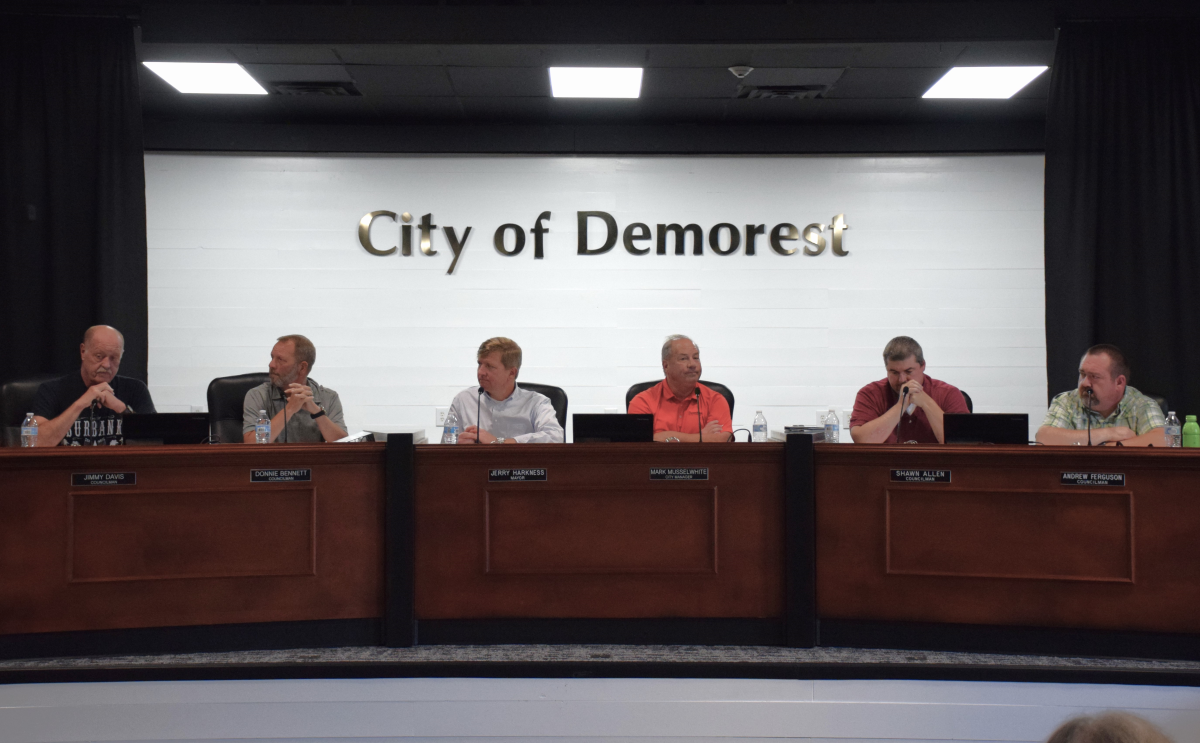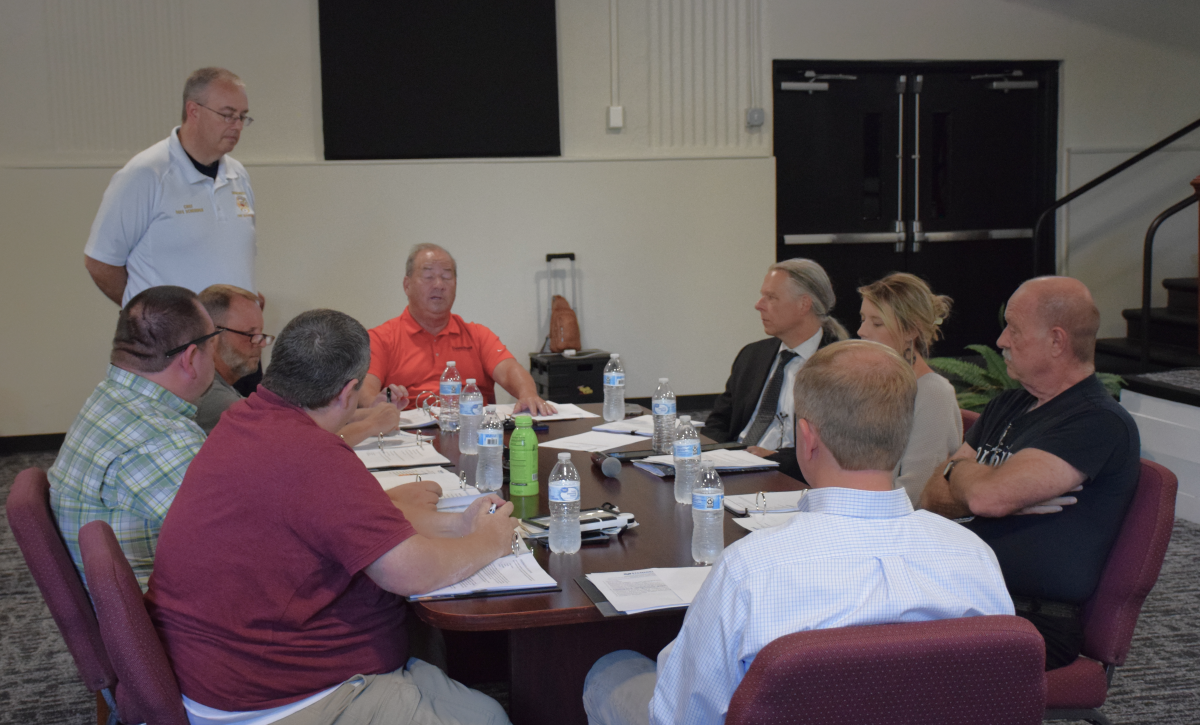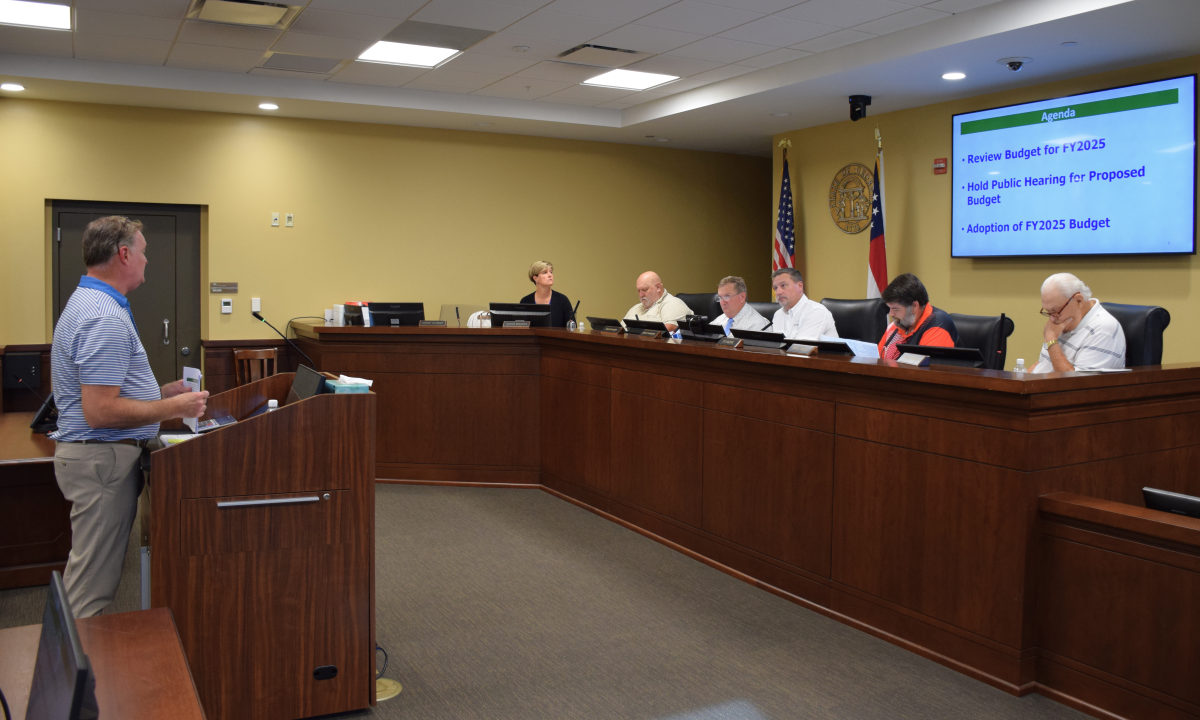
Gov. Deal speaks about the state’s response to Hurricane Michael during a press conference on Oct. 11 in Atlanta. Here he’s flanked by top state officials assisting in the emergency response following the devastating storm.
The remnants of what was once Hurricane Michael have moved off the Mid-Atlantic Coast. Before exiting the mainland U.S., the storm left a deadly trail of devastation stretching from the Florida Panhandle to Virginia.
Michael is now being blamed for at least seventeen deaths, including an 11-year-old girl in Southwest Georgia.
Hurricane Michael leveled the coastal Florida town of Mexico Beach where it made landfall and caused widespread damage along the northeastern Gulf Coast, including Panama City.
Over 1.4 million homes and businesses have lost power in the South. In Georgia, 220K+ were still without electricity early Friday.
Hurricane damage and response in Georgia
The storm cut a wide swath of damage from extreme southwest to east-central Georgia. In a press conference Thursday, Gov. Nathan Deal and state emergency officials offered a glimpse into some of the damage. Deal said southwest Georgia where the hurricane Michael entered the state was hardest hit. He said damage assessments in that area have been complicated by a lack of communication due to damage to telecommunications facilities in the area.
Farmers in the region suffered a big blow. More than 53 poultry houses were completely destroyed in Southwest Georgia. Cotton crops that were in the process of being harvested ended up being ‘harvested’ by the storm, according to the state’s Commissioner of Agriculture Gary Black.
“It’s a very serious day for agriculture in Georgia,” said Black. “This is going to have lingering effects on our state for some time to come.”
The Georgia Department of Transportation reported 127 state routes were closed due to trees and an additional 120 roads had debris on them. “Every GDOT crew is out working for storm response,” Gov. Deal said.
The state’s emergency response also includes chainsaw ‘strike’ teams and debris removal teams from the Georgia Forestry Commission and Department of Corrections.
Deal said the state has gotten a “partial granting” of federal response for debris removal. He said it’s still too early to know the full extent of the damage. He was asked by a reporter if the impacts of the storm were worse or better than what was anticipated. “If you’re one that got hit, it was a real disaster,” he responded.
The Georgia National Guard moved 1,500 soldiers and air personnel into the affected areas on Thursday. They’re manning two points of distribution, helping to resupply citizens and first responders. In addition, the National Guard is sending in MPs to reinforce law enforcement.
“We’re going to send 150 military police to Albany to thicken the Georgia State Patrol and assist them in their responsibilities,” said Adjutant General, Maj. Gen. Joe Jarrard.
Impacts on Northeast Georgia
For all the damage to the south, Northeast Georgia came out of the storm relatively unscathed. Schools in Banks, Habersham, Hart, and Elbert counties closed out of an abundance of caution. There were reports of a few downed trees in Habersham but E911 Director Lynn Smith says, “other than that, nothing.”
There were no travel advisories or road damage reported in the northern part of the state.
“We are all good in the 21 counties in Northeast Georgia,” says Georgia Department of Transportation spokesperson Katie Strickland. She says there was “nothing reported or responded to on our State Routes, bridges or interstates.”
Historic hurricane
Hurricane Michael was truly historic. It was the strongest hurricane to make landfall in the continental United States in since Camille in 1969. When it came ashore Wednesday near Mexico Beach, Florida, the storm was just shy of a Category 5 hurricane. The storm decimated Mexico Beach and flattened parts of Panama City and other towns in the Florida Panhandle.
A look at the widespread destruction across Panama City, Florida from #Hurricane #Michael. Recovery efforts begin in Florida and Georgia as Michael tracks into the Carolinas. Our crews are live 24/7 with the latest forecast and conditions. pic.twitter.com/Bw9ZcP8RwS
— AMHQ (@AMHQ) October 11, 2018
Michael dropped to a Category 1 hurricane as it moved inland into southwest Georgia before weakening into a tropical storm.
Last update Oct. 12 @11:30pm







